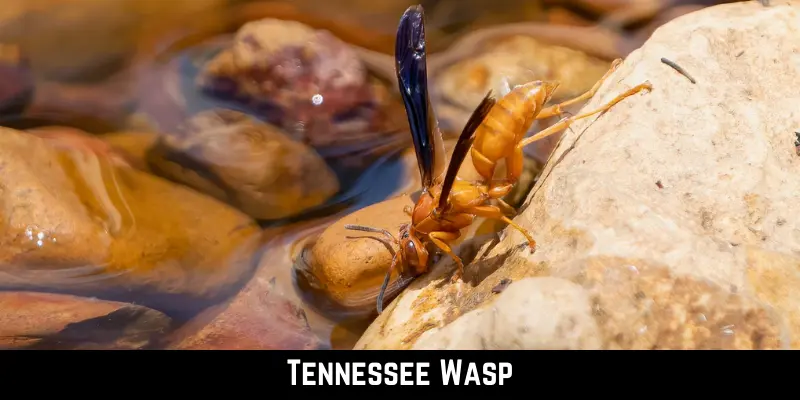Wasps are among the most common and annoying household pests that sting to protect their nests and colonies. They are present in almost every state of America, but do you know Tennessee is renowned for wasps? Now you may think, what are Tennessee wasps?
Tennessee is situated in the Southeastern part of America. It is famous for having almost all types of wasps. These wasps can be aggressive or non-aggressive, including paper wasps, yellow jackets, bald-faced hornets, cicada killers, and many more.
Are you enthusiastic to know about all the wasps living in Tennessee? If so, read the below details to have in-depth knowledge.
Types of Tennessee Wasp
You can find various types of wasps in Tennessee. Below is a list of some common wasps in Tennessee:
| Type of Wasps | Appearance | Behavior | Average Size | Social or Solitary |
| Yellow Jacket Wasps | Yellow and black striped markings | Aggressive | 10-16 mm | Social |
| Paper Wasps | Black or brown with yellow stripes | Aggressive | 0.63 inches | Social |
| European Paper Wasps | Yellow and black coloration | Aggressive | 2 cm | Social |
| Northern Paper Wasps | Black coloration with apical markings | Aggressive | 10 to 22 mm | Social |
| Bald-Faced Hornets | Black coloration with black face | Non-aggressive | 19 mm | Social |
| Solitary Wasps | Smooth and shiny body | Non-aggressive | 0.5 to 1 inches | Solitary |
| Dirt Dauber Wasps | Black and metallic coloration | Non-aggressive | 0.5 to 1 inches | Solitary |
| Red Paper Wasps | Reddish-brown coloration with fine ridges | Aggressive | 1 inch | Social |
| Cicada Killers | Black bodies with yellow markings | Non-aggressive | 3.5 cm | Solitary |
| Potter Wasps | Black coloration with yellow markings | Non-aggressive | Less than 1-inch | Solitary |
| Cuckoo Wasps | Striking metallic coloration | Non-aggressive | 0.5-inch | Solitary |
| Ichneumon Wasps | Brown or black coloration with white or red markings | Non-aggressive | 0.5-inch | Solitary |
| Sand Wasps | Yellow or black coloration with a banded pattern | Non-aggressive | ¾ to 1-inch | Solitary |
Yellow Jacket Wasps (Tennessee Wasp)
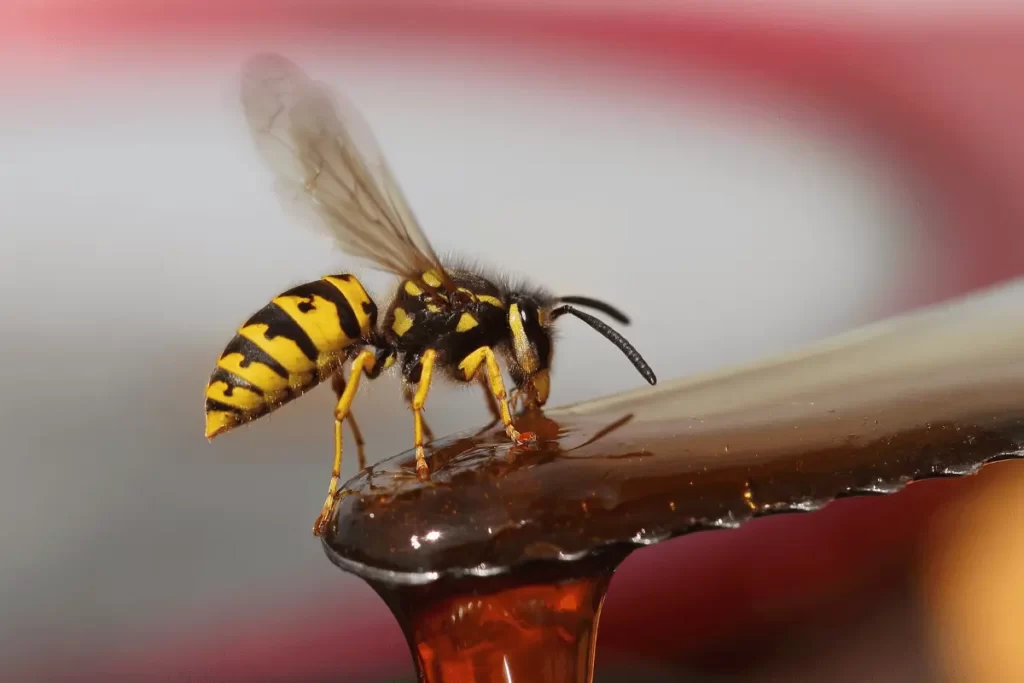
These types are famous for their yellow and black striped markings across the body. They are small insects with a length of about 10-16mm. These social wasps love to reside in aerial locations like shrubs, trees, and buildings. Moreover, these wasps are aggressive and most likely to sting you if they feel threatened.
As these wasps live in colonies, they have a queen, workers, and males. According to the Royal Entomological Society, queen yellow-jacket wasps go far from their original nests to establish new ones in the spring. These wasps also play an important ecological role by controlling several pests, like caterpillars and flies. Apart from benefits, these wasps can create a nuisance, and their stings could be painful.
Therefore, seeking medical care is better if yellow-jacket wasps accidentally bite you.
Paper Wasps (Tennessee Wasp)

Paper wasps are a particular type named because of their paper-like nests. They are famous for their slender bodies, long legs, and small colonies, commonly found in North and South America. These wasps build their nests by chewing wood fibers and mixing them with their saliva, giving a paper-like appearance.
Additionally, they live in small colonies with a queen, workers, and male wasps. These wasps are also aggressive and can sting you if you tease them. Paper wasps are also beneficial for you because they control ground insects.
Another distinct feature of these wasps is that they have various forms and can vary in size, color, and behavior, such as European and Northern paper wasps.
European Paper Wasp (Tennessee Wasp)
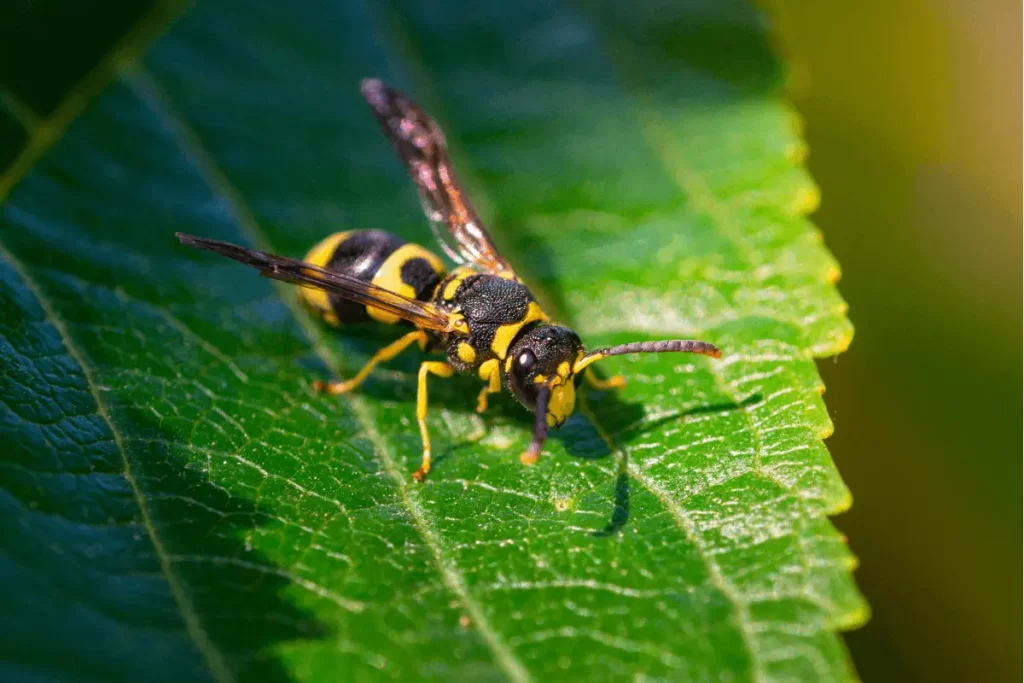
The Journal of Comparative Physiology B states that European Paper Wasps are common wasp species in South and Central Europe and have recently spread to the north. They have a slender, elongated body with a distinctive yellow and black coloration. These wasps are famous for open-celled paper nests.
As these wasps are the subtype of paper wasps, they used to live in colonies with a queen, males, and worker wasps. Their colonies die off in the winter and are re-established in the spring.
They feed on nectar and sugary substances and eat insects like caterpillars. That’s why they are considered ecologically essential insects. Moreover, like other wasp species, they are not aggressive but can sting you if they feel threatened.
Northern Paper Wasp (Tennessee Wasp)
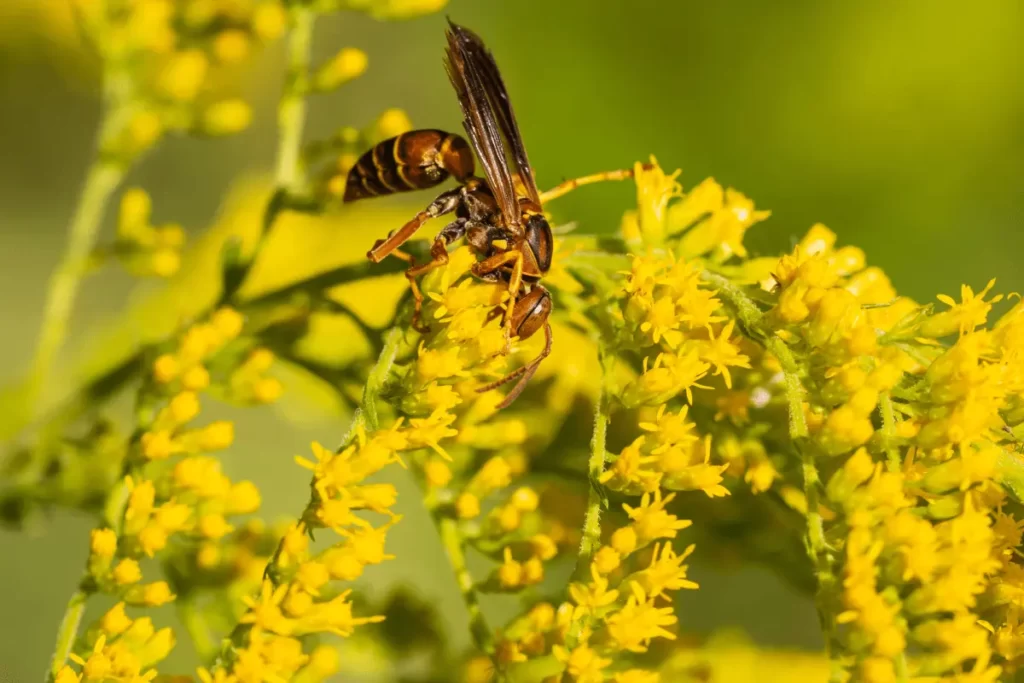
A northern paper wasp known as Polistes fuscatus is found in Eastern North America. These paper wasps are relatively giant, with a 15 to 22 mm body length. Their color can vary depending on the region. Usually, males have dark apical markings, while the female bodies are black.
Moreover, they construct paper-like nests in eaves, trees, branches, and attics. These wasps feed on nectar to maintain their energy level. These wasps also eat many insects and are beneficial for agricultural purposes. Furthermore, these wasps are less aggressive but can bite you at any threat.
They have hierarchical social colonies and contain a few dozen to a few hundred wasps. As the winter turns cold, their colonies die off except the newly mated queens. These queens then emerge in the spring to establish a new colony.
Bald-Faced Hornets (Tennessee Wasp)
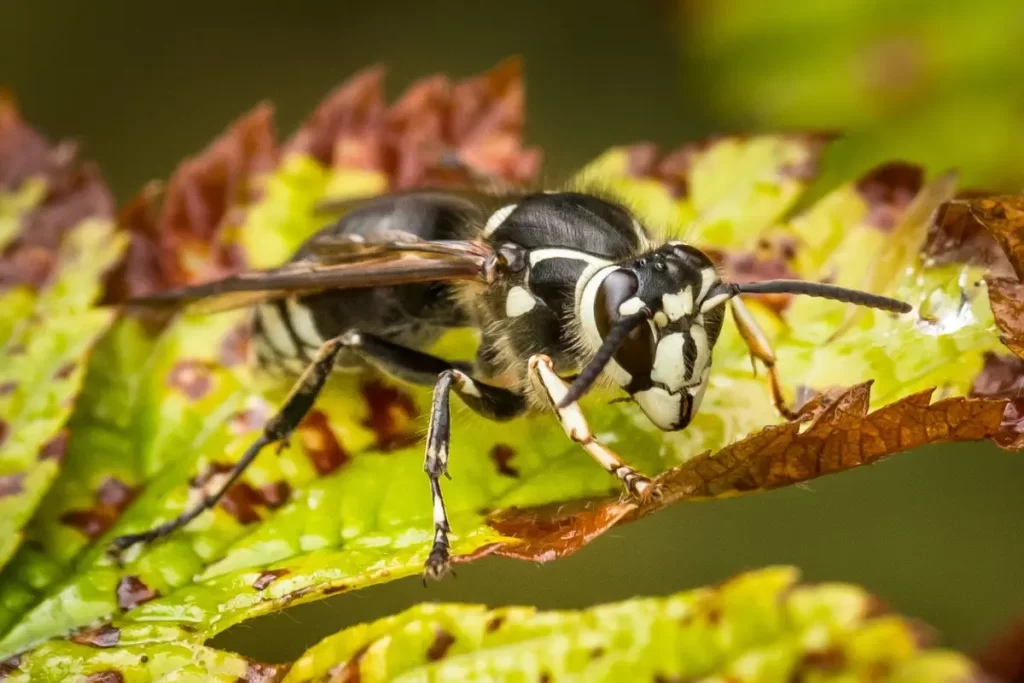
Bald-faced hornets, known as Dolichovespula maculata, are present throughout the United States and Canada. They are named bald-faced because of their black coloration and white face. These wasps have three white stripes at the end of their body, and the average adult has a 19mm body length.
They build paper-like nests from chewed wood pulp and their saliva. These nests are commonly found in trees and shrubs and have tear-drop shapes that can reach a length of about a foot. Moreover, these hornets are social insects and live in colonies with a queen, workers, and male hornets.
Bald-faced hornets feed on insects, including other wasps, caterpillars, and flies. They are less aggressive but sting repeatedly, causing severe pain and allergic reactions. Therefore, if you want to control bald-faced hornets, it’s essential to ask for professional help.
Solitary Wasps (Tennessee Wasp)
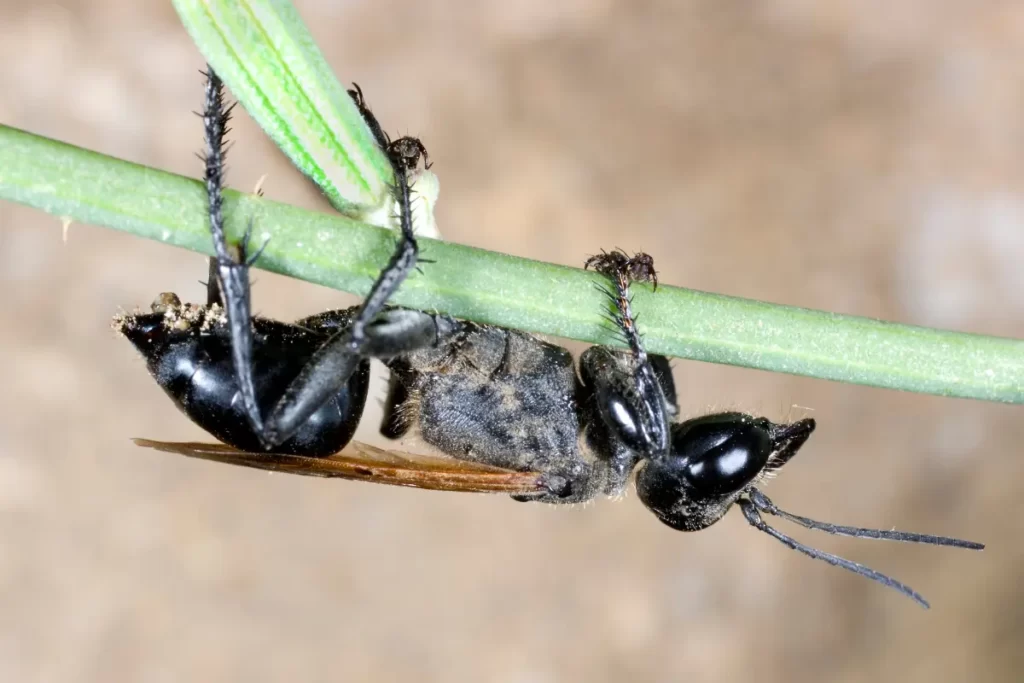
These vast groups don’t form colonies but live and reproduce independently. Each female solitary wasp is responsible for laying eggs and building the nest. They make their nest from mud, leaves, and caves. Examples of such solitary wasps are mud daubers and potter wasps.
These wasps provide food for their offspring by killing or paralyzing their prey. The life cycle of solitary wasps consists of four stages: egg, larvae, pupae, and adult. Moreover, these wasps have non-aggressive behavior and sting only if threatened.
Solitary wasps are also ecologically significant because of their preying abilities. There is a vast diversity of solitary wasps so you can find them in various habitats, from forests to deserts to urban environments.
Dirt Dauber Wasps (Tennessee Wasp)
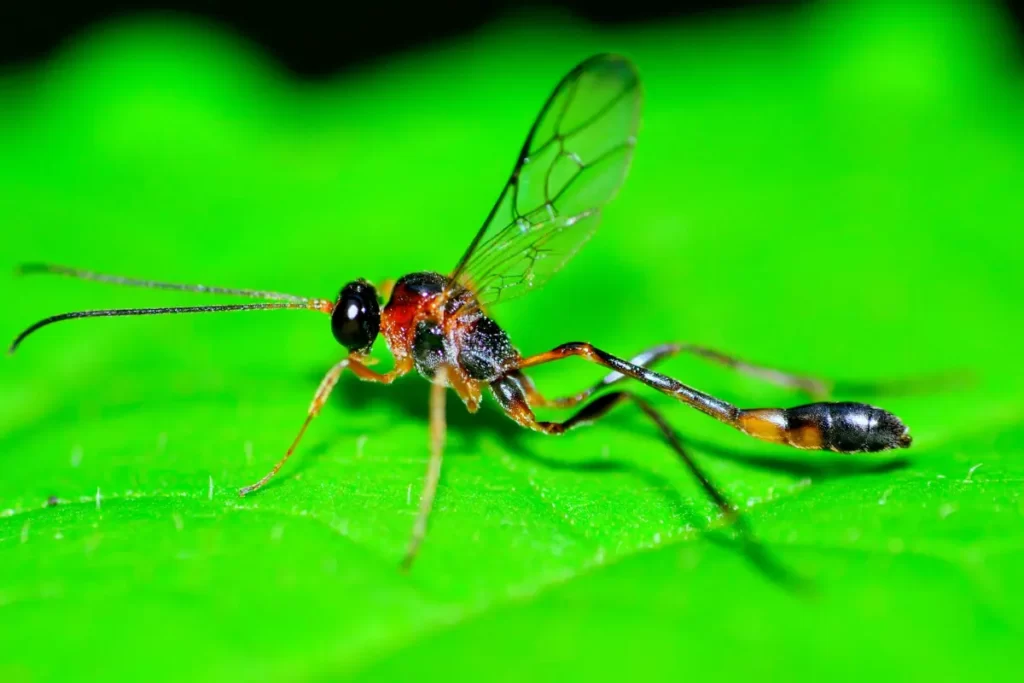
Dirt Dauber wasps, also known as mud daubers, are solitary. They belong to different families and have varied appearances. These wasps have various colors: black, metallic blue, or iridescent green. They are solitary wasps that love to live independently and depend on females to build nests.
These wasps build their nest using mud or clay. They gather wet soil and then mix it with their saliva, giving it a cylindrical shape. Moreover, they are predators and hunt various insects, including spiders, wasp larvae, and bies.
After providing food, the female dirt dauber lays an egg in each cell. When larvae hatch from these cells, they feed on the stored food. Further, these wasps are not aggressive and sting you if they feel unsafe.
Red Paper Wasps (Tennessee Wasp)
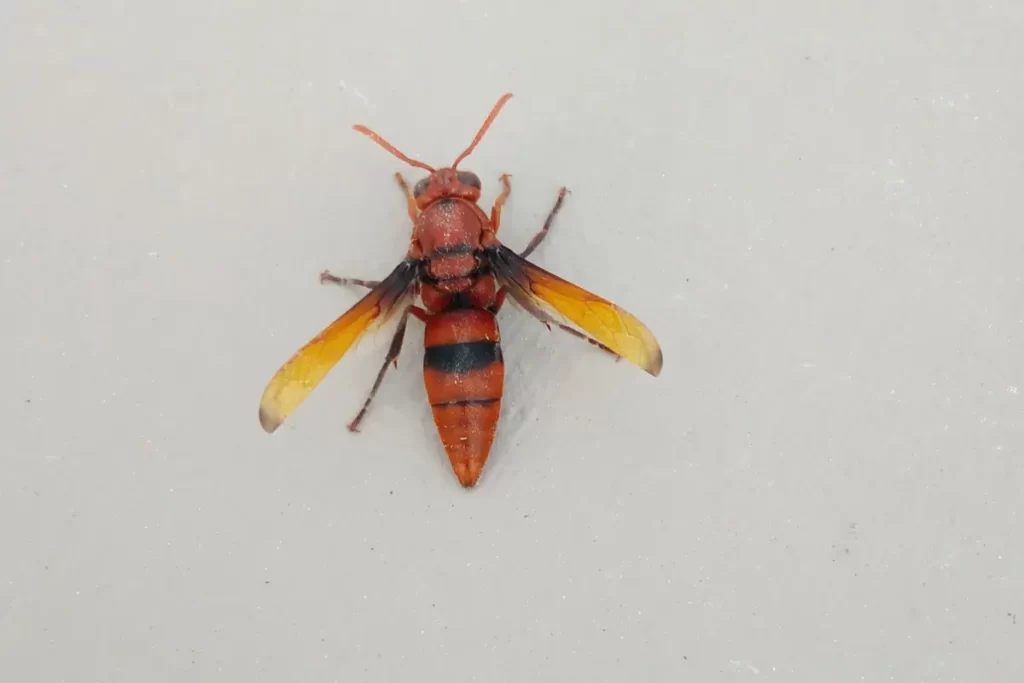
They are commonly known as Polistes Carolina, are found in the Eastern United States and are famous for fine ridges on their body. They have a distinctive appearance with a reddish-brown coloration on their head and thorax. Moreover, they have long, slender bodies with longitudinal wings.
As the sub-type of paper wasps, they build paper nests with wood fibers and saliva. These nests typically consist of a single comb. In addition to that, these wasps have a hierarchical social structure with a queen and several subordinate females. Red paper wasps are carnivores and eat various small insects, performing an important ecological role.
While red paper wasps are beneficial, their sting can pose a serious threat by causing severe allergic reactions. Therefore, it’s better to avoid disturbing their nests.
Cicada Killer(Tennessee Wasp)
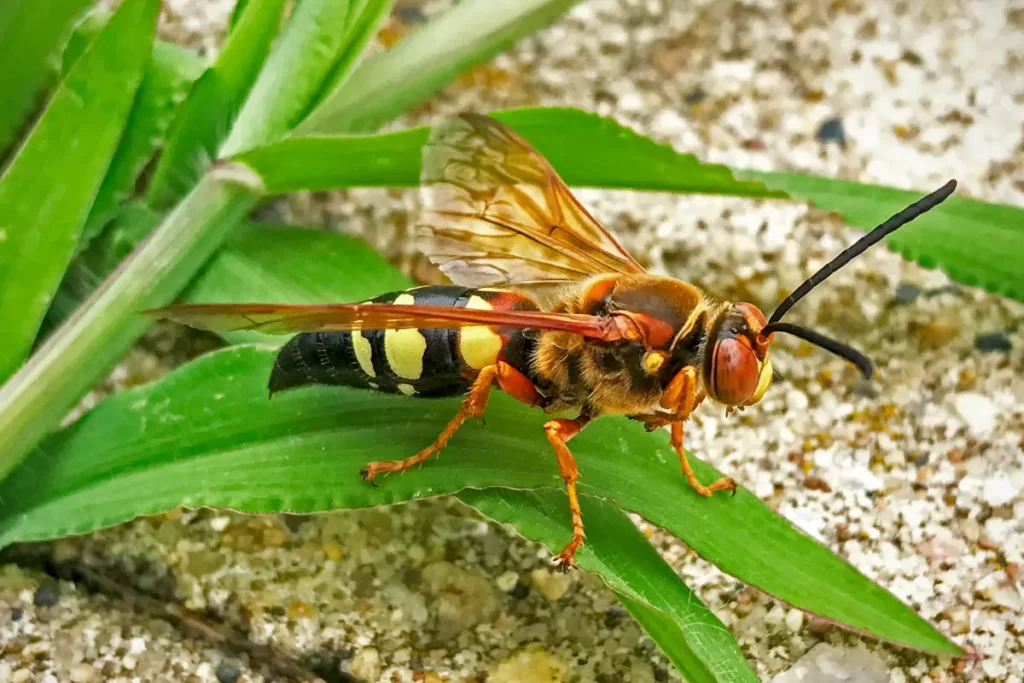
Cicada killers or Sphecius Speciosus are solitary wasps famous for impressive size and distinctive behavior. They are among the most giant wasps in North America, with females reaching up to 3.5 cm in length. These wasps have black bodies with yellow markings on their abdomen and thorax.
As the name indicates, these wasps primarily hunt cicadas. After capturing the cicadas, they paralyze them with their sting and carry them back to their nests for a feast.
Furthermore, they construct burrows up to six feet deep in the ground, usually in sandy or loose soil. Each burrow consists of several cells where female wasps lay eggs. Besides, these wasps are not aggressive and are primarily active during the summer.
Potter Wasps (Tennessee Wasp)
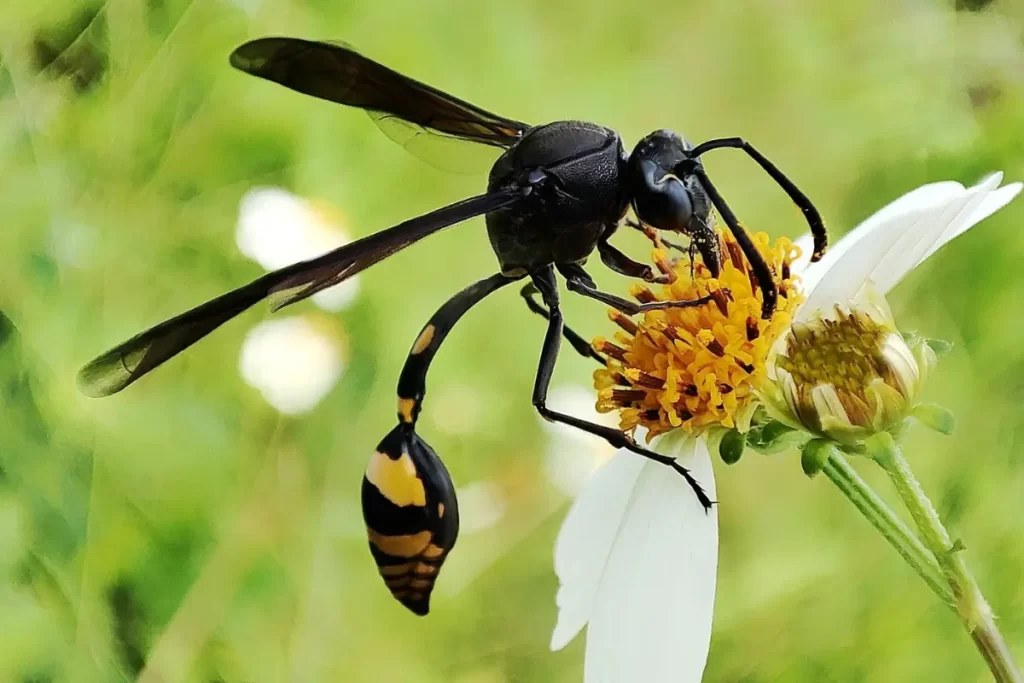
These wasps, scientifically known as Eumeninae, are a diverse subfamily belonging to the family Vespidae. They are famous for their distinctive nest-building behavior, which involves creating small, vase-shaped structures out of mud or clay. These wasps are named potter wasps because of the pottery-designed nest.
According to Scientific Reports, these wasps build mud cells where female wasps lay eggs and leave the caterpillars as food. Their life cycle lasts from a few weeks to more than a year.
These wasps exhibit a wide range of colors, sizes, and shapes. Some wasps are tiny, while others are large. Moreover, they play an essential role in controlling insect populations, especially those of caterpillars and spiders.
Cuckoo Wasps (Tennessee Wasp)
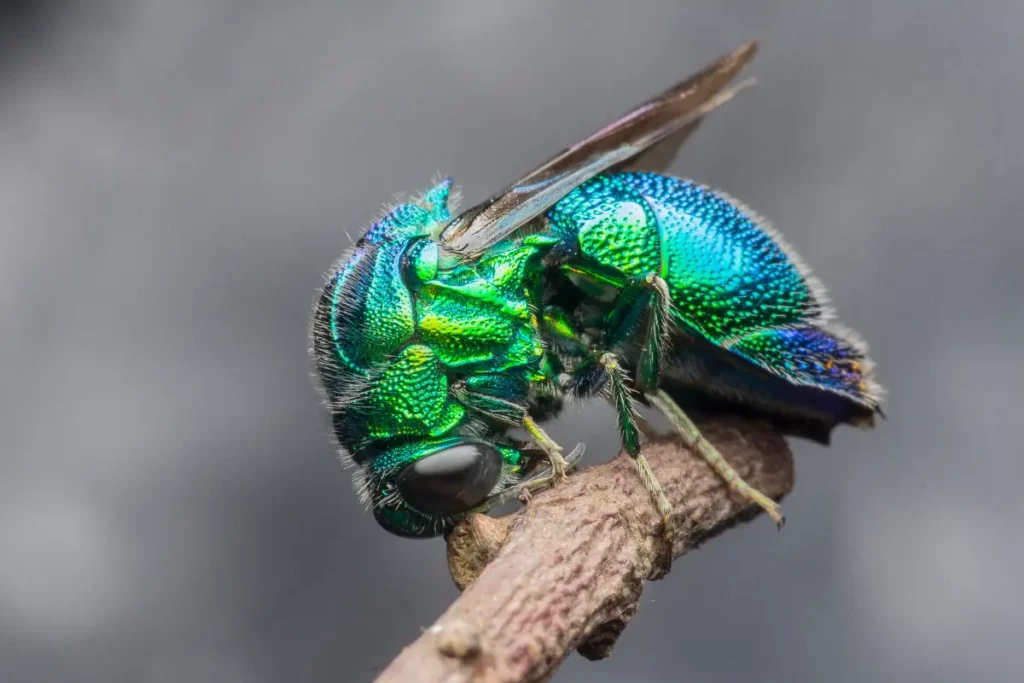
These wasps, commonly known as emerald or jewel, are a diverse group of parasitic wasps belonging to the Chrysididae family. These wasps are famous for striking metallic hues, from blue and green to red and gold. Cuckoo wasps are named after cuckoo birds, known for laying eggs in other nests.
Likewise, cuckoo wasps have parasitic behavior and target solitary wasps and bees for nests. These wasps undergo metamorphosis similar to others, including eggs, larvae, pupa, and adults. Although they possess stingers, they are non-aggressive to humans and sting on a threat. Furthermore, you can find them in various habitats, like forests, grasslands, and gardens.
Above all, cuckoo wasps also play a significant ecological role by controlling the population of several insects.
Ichneumon Wasps (Tennessee Wasp)
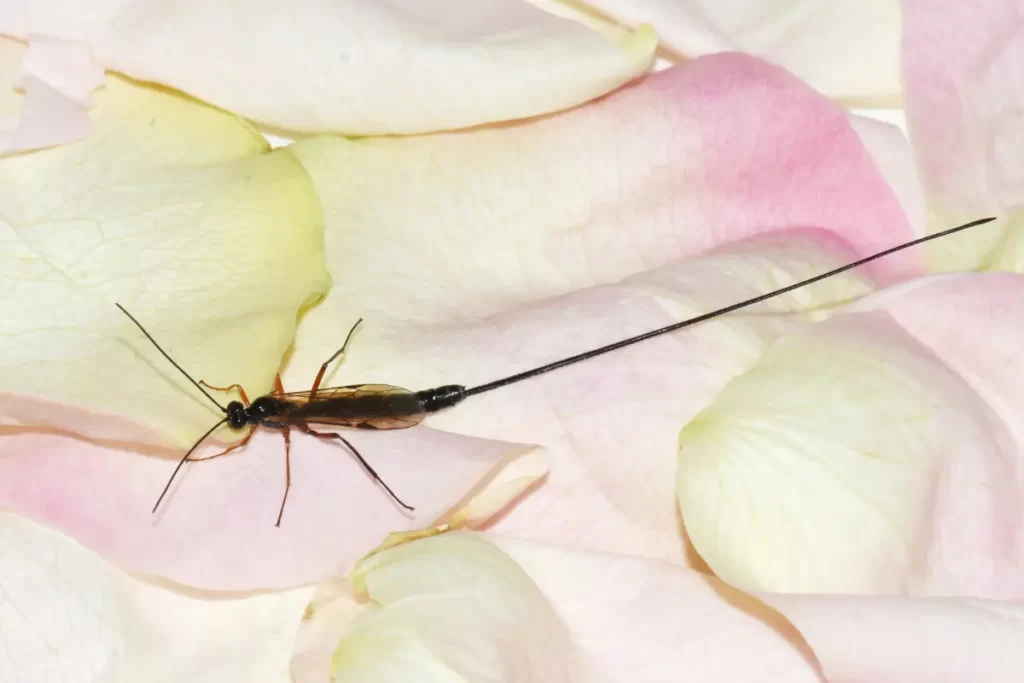
Ichneumon wasps are a versatile group of parasitic wasps belonging to the family Ichneumonidae. There are almost 25000 species belonging to the Ichneumonidae family.
These are solitary wasps and are famous for their distinctive reproductive behavior. Further, these wasps are parasitoids, meaning their larvae develop on or inside another insect host, eventually killing it.
Moreover, ichneumon Wasps vary widely in size, from a few millimeters to several centimeters in length. Many female Ichneumon wasps have a long, needle-like ovipositor, which they use to inject eggs into their host.
You can find them in various habitats, including forests, grasslands, and farms. Moreover, these wasps are non-aggressive and only bite if they smell any threat.
Sand Wasps (Tennessee Wasp)
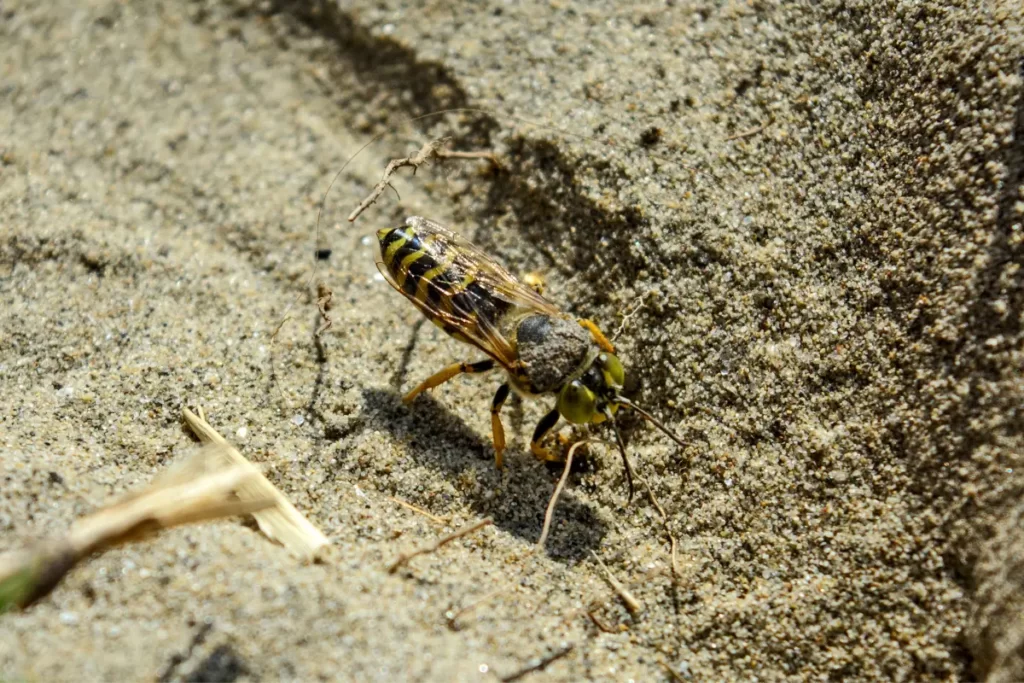
Bembicini, or sand wasps, are a large group of wasps that belong to the family Crabronidae. They are named sand wasps because of their ability to build nests in sand or loose soil.
They construct burrows with an enlarged chamber at the bottom for their nests. These wasps come in various shapes and sizes but have a slender body with a narrow waist and prominent, often elongated, wings.
Moreover, sand wasps are predators and hunt different arthropods, especially insects. These wasps have stingers that they can use to paralyze their prey. However, they have non-aggressive behavior and can only bite you if you tease them. Above all, these wasps play a crucial role in controlling the population of various insects.
How Can You Identify Wasps in Tennessee?
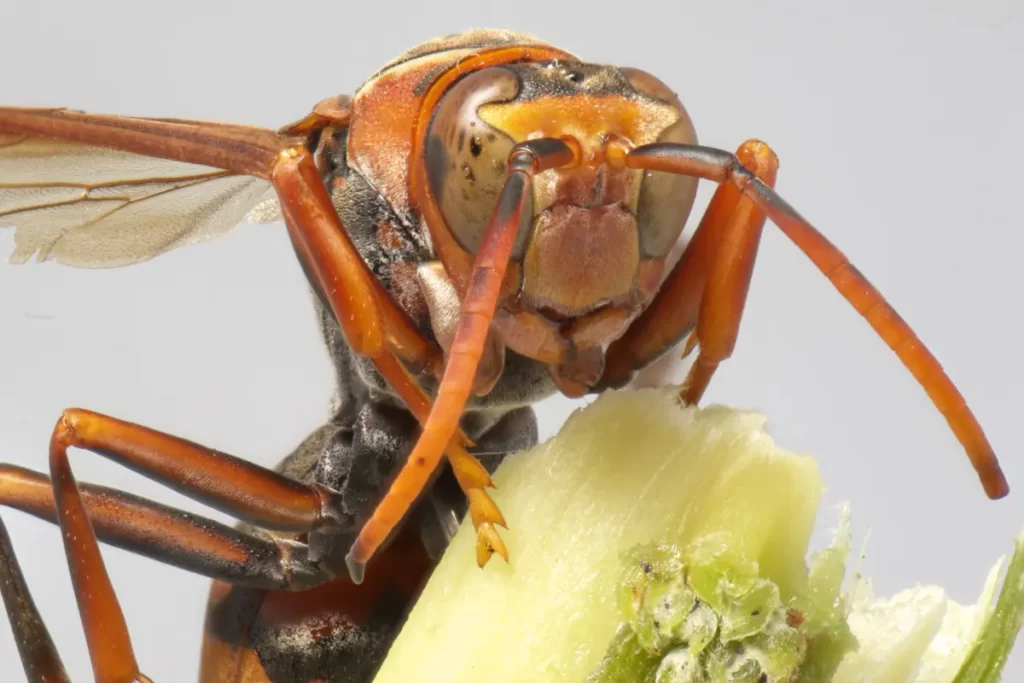
Different types of wasps live in Tennessee, so identifying them is challenging. Their identification depends on their physical characteristics and behavior. Below are some things that you must look for while recognizing wasps:
- Wasps have slender bodies and narrow waists that separate the thorax from the abdomen.
- They have bright colors, from yellow to reddish brown.
- Wasps vary in size from 0.5 to 2 inches in length.
- They have a segmented and long antennae with more than 12 segments.
- Their wings are membraneous, and they fold them longitudinally when resting.
- Some wasps have unique characteristics; for example, bald-faced hornets have black and white markings on their body.
- Moreover, they make different nests. Some wasps have paper-like nests, while some create them in caves.
Are Wasps Common in Tennessee?
Yes, wasps are common insects in Tennessee. Tennessee is the home to several wasps, including paper wasps, bald-faced hornets, yellow jacket wasps, cicada killers, cuckoo wasps, sand wasps, and various solitary wasps. These wasps are frequently found in gardens, parks, grasslands, and around the home, particularly in the summers.
Wasps are not only aggressive; they help control various insect populations, including caterpillars, bees, and spiders. Therefore, they play an essential ecological role by preventing multiple pests.
Some wasps are highly aggressive, and their sting causes severe allergic reactions. Consequently, it’s better to ask for help from a professional pest control company to deter them.
What Is the Largest Wasp in Tennessee?
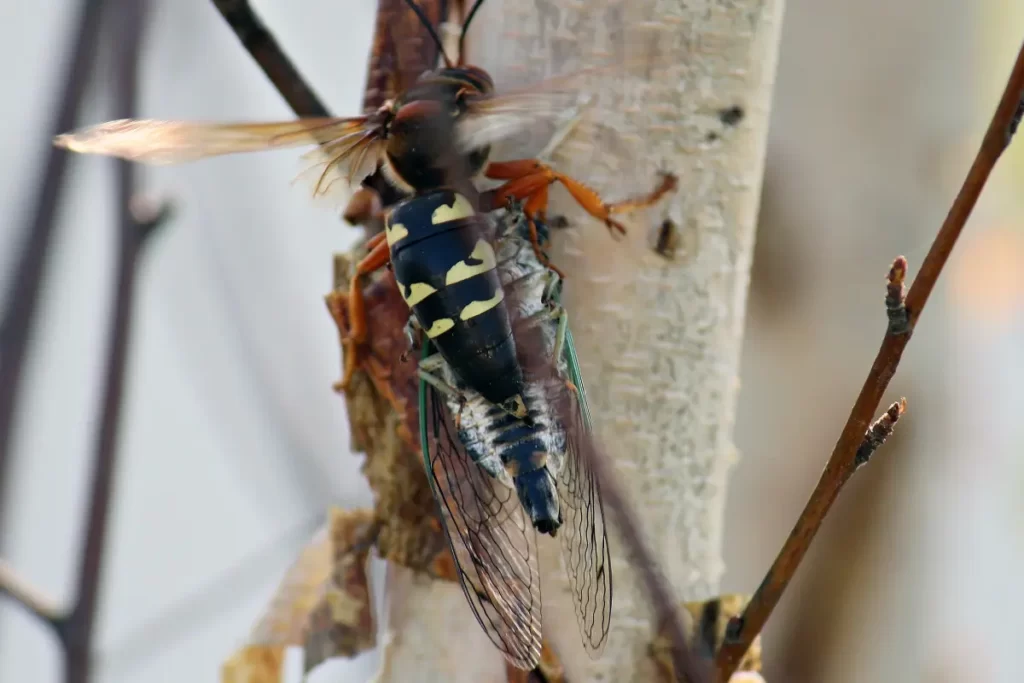
Cicada killer wasps are the most giant wasps in Tennessee. They are famous for their large size, with female cicadas reaching up to 3.5cm long. These wasps are solitary, so they do not depend on their hosts for nests.
They are well known for their distinctive behavior of capturing cicadas to feed young wasps. The female cicada wasp kills or paralyzes the cicadas, bringing them into their nests to provide their growing larvae.
While cicada wasps are giant and have an intimidating appearance, they are not aggressive towards humans. They sting only if they perceive a threat to their nests or colonies. Moreover, as they kill cicadas, they are important predators and help control their population.
Are There Wasps in Tennessee Vs. Hornets?
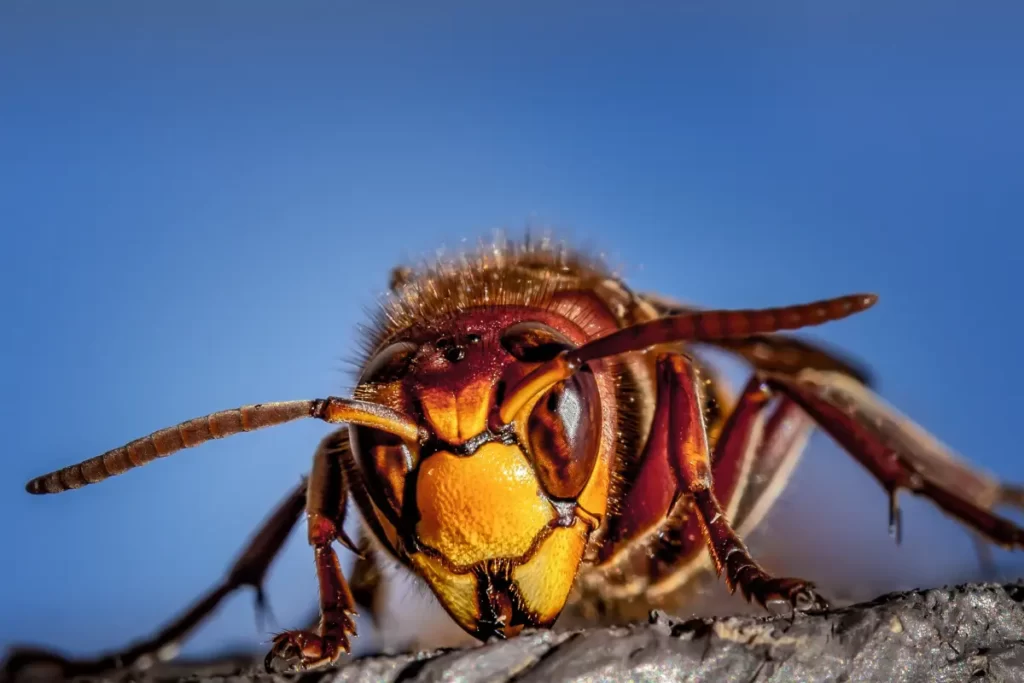
Both wasps and hornets are found in Tennessee. Some common wasps found in Tennessee include paper wasps, bald-faced hornets, mud daubers, and yellow jacket wasps.
Paper wasps are renowned for their paper-like nests, while yellow jacket wasps are famous for building them above and below the ground. Additionally, mud daubers are known for making their nests with mud or clay.
On the other hand, hornets are giant wasps. The most common hornet in Tennessee is the European hornet, but their number is less than other wasps. Furthermore, it’s vital to note that specific types of wasps and hornets can vary depending on the region and habitat. If you want to get rid of wasps and hornets, it’s better to consult with a local pest control expert.
How to Prevent Wasps in Tennessee?
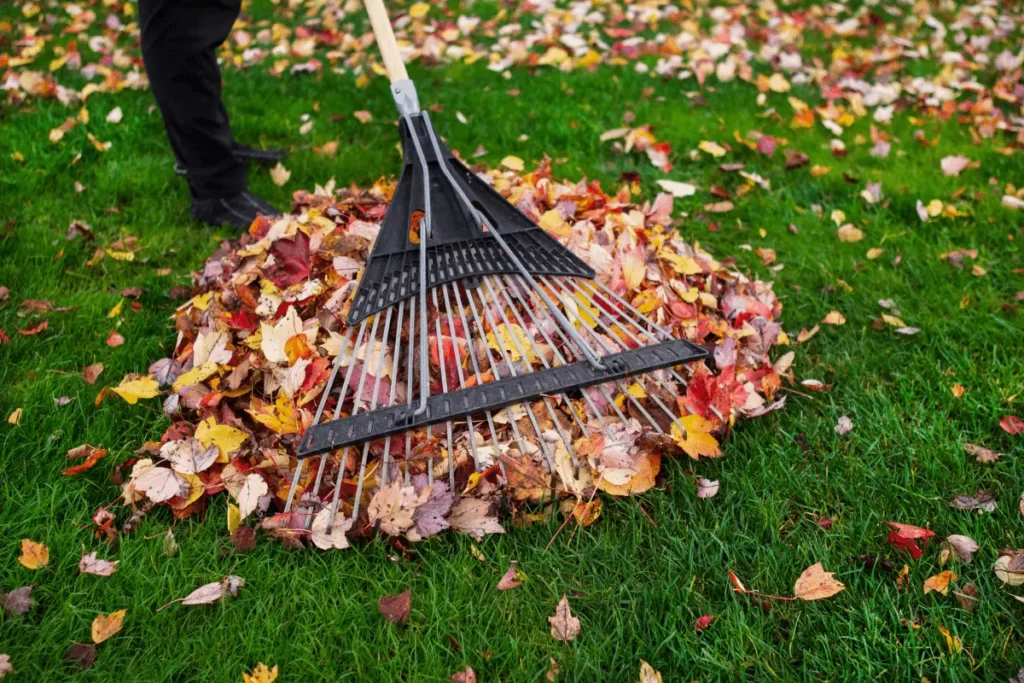
Preventing wasps, whether in Tennessee or elsewhere, is always challenging. However, you can avoid them by following the below steps.
- Close Entry Points: Investigate your home for gaps and cracks in walls, windows, and doors. If you find any, close them with caulk or weather stripping.
- Clean Outdoor Areas and Yards: Regularly clean up food debris and spills, especially sugary foods that attract wasps.
- Regularly Trim Trees: As wasps build their nests in trees and other protected areas, trimming trees, bushes, and shrubs regularly discourages them from constructing nests.
- Secure Garbage Cans: Close your garbage cans with a tight-fitting lid to prevent wasps from being attracted to food debris.
- Employ Wasp Traps: Use commercial wasp traps around your property, especially near vegetation.
- Use Essential Oil: Some essential oils, including peppermint, citronella, and eucalyptus, can deter wasps. Add a few drops of oil in water, then spray this mixture in suspected areas of the wasp’s presence to ward off them.
- Consult a Professional: If there is a large wasp infestation, consult a professional pest control company to remove them.
Other Wasp Types Found in The USA
Are you wondering, if there are other types of wasps found in the USA? You can find everything about other species here:
Conclusion
Tennessee is the State of the United States. It is the only region of America with various wasp species, including paper wasps, yellow jacket wasps, solitary wasps, sand wasps, cicada killers, mud daubers, and different hornets. These wasps are solitary or social, meaning they can live alone or in colonies.
Further, the giant wasps in Tennessee are cicada killers famous for killing cicadas and bringing them into their nests as food for their growing larvae. These wasps are either aggressive or non-aggressive; therefore, if you want to deter them, ask for help from an expert to prevent any allergic reactions.
References
Agersnap, S., Sigsgaard, E.E., Jensen, M.R., Ávila, M.R., Carl, H., Moller, P.R. et al. (2022) A National Scale “BioBlitz” using citizen science and eDNA Metabarcoding for monitoring coastal marine fish. Frontiers in Marine Science, 9, 824100.
Käfer, H., Kovac, H., Oswald, B. et al. Respiration and metabolism of the resting European paper wasp (Polistes dominulus). J Comp Physiol B 185, 647–658 (2015). https://doi.org/10.1007/s00360-015-0915-7
